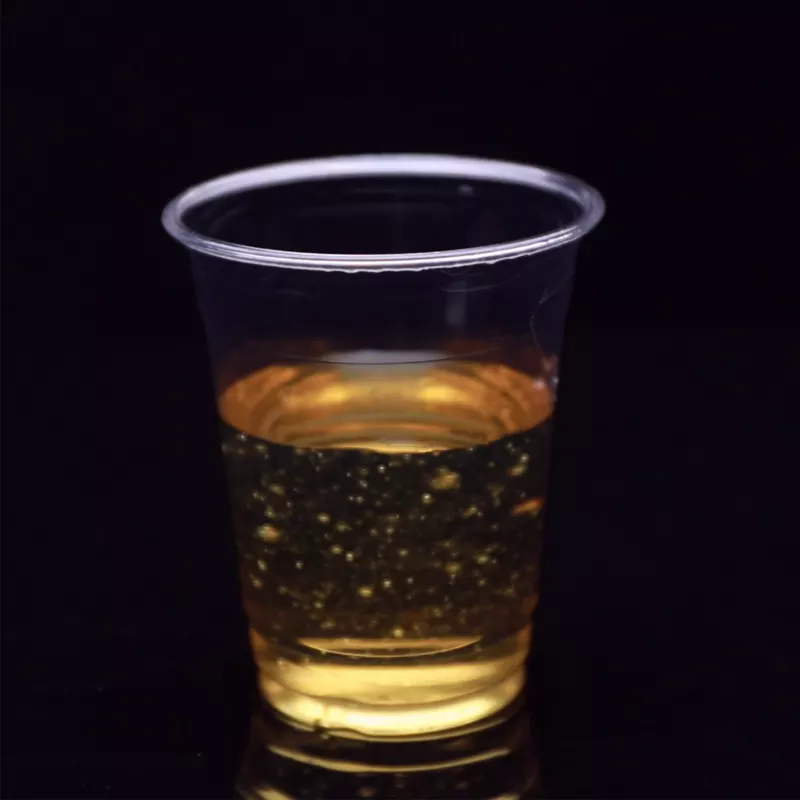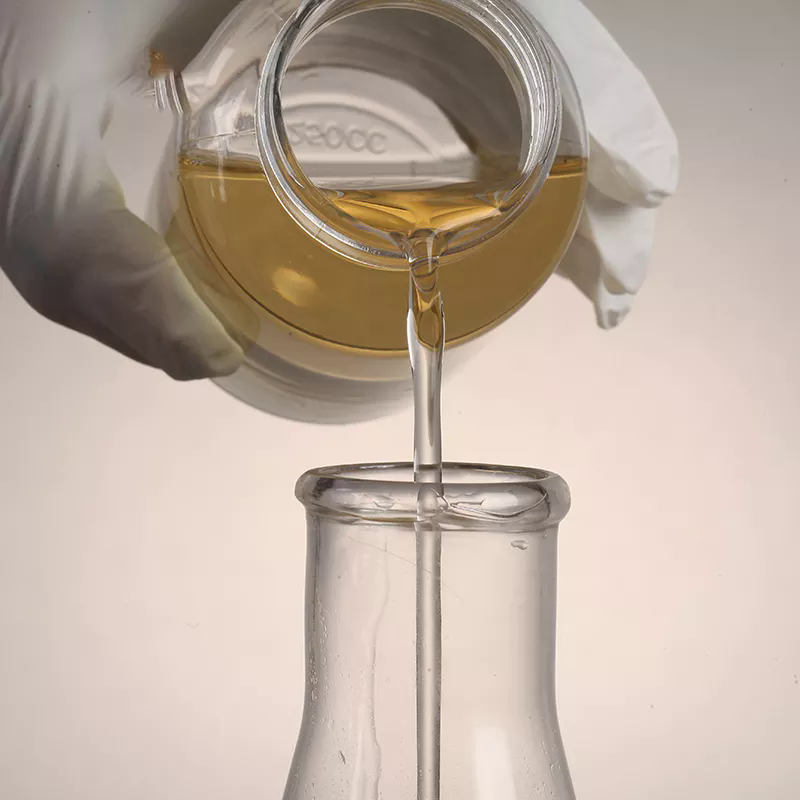Cyclopentanol
- CAS NO.:96-41-3
- Empirical Formula: C5H10O
- Molecular Weight: 86.13
- MDL number: MFCD00001363
- EINECS: 202-504-8
- SAFETY DATA SHEET (SDS)
- Update Date: 2024-12-18 14:15:32

What is Cyclopentanol?
Chemical properties
colourless liquid
The Uses of Cyclopentanol
Cyclopentanol is a versatile compound used as a building block, intermediate and solvent.
The Uses of Cyclopentanol
A versatile compound used as a building block, intermediate, and solvent.
The Uses of Cyclopentanol
Cyclopentanol can be used as:
- An alkylating agent in the preparation of alkylated aromatic compounds using Fe3+-montmorillonite catalyst via Friedel–Crafts alkylation reaction.
- A reactant in the acylation of alcohols with an acid anhydride or acid chloride.
- A substrate in the synthesis of high-density polycyclic aviation fuel by the Guerbet reaction.
What are the applications of Application
Cyclopentanol is a versatile compound used as a building block, intermediate, and solvent
Definition
ChEBI: The simplest member of the class of cyclopentanols bearing a single hydroxy substituent. The parent of the class of cyclopentanols.
General Description
A colorless viscous liquid with a pleasant odor. Slightly less dense than water. Flash point 124°F. Vapors heavier than air. Used to make perfumes and pharmaceuticals.
Air & Water Reactions
Flammable. Soluble in water.
Reactivity Profile
Cyclopentanol is an alcohol. Flammable and/or toxic gases are generated by the combination of alcohols with alkali metals, nitrides, and strong reducing agents. They react with oxoacids and carboxylic acids to form esters plus water. Oxidizing agents convert them to aldehydes or ketones. Alcohols exhibit both weak acid and weak base behavior. They may initiate the polymerization of isocyanates and epoxides.
Health Hazard
May cause toxic effects if inhaled or absorbed through skin. Inhalation or contact with material may irritate or burn skin and eyes. Fire will produce irritating, corrosive and/or toxic gases. Vapors may cause dizziness or suffocation. Runoff from fire control or dilution water may cause pollution.
Fire Hazard
HIGHLY FLAMMABLE: Will be easily ignited by heat, sparks or flames. Vapors may form explosive mixtures with air. Vapors may travel to source of ignition and flash back. Most vapors are heavier than air. They will spread along ground and collect in low or confined areas (sewers, basements, tanks). Vapor explosion hazard indoors, outdoors or in sewers. Runoff to sewer may create fire or explosion hazard. Containers may explode when heated. Many liquids are lighter than water.
Properties of Cyclopentanol
| Melting point: | -19 °C (lit.) |
| Boiling point: | 139-140 °C (lit.) |
| Density | 0.948 g/mL at 20 °C
0.949 g/mL at 25 °C (lit.) |
| refractive index | n |
| Flash point: | 124 °F |
| storage temp. | Flammables area |
| solubility | Chloroform (Soluble), Methanol (Sparingly) |
| form | Liquid |
| pka | 15.31±0.20(Predicted) |
| color | Clear colorless to slightly yellow |
| Water Solubility | slightly soluble |
| Merck | 14,2742 |
| BRN | 1900556 |
| Dielectric constant | 18.0(20℃) |
| Stability: | Stable. Flammable. Incompatible with strong oxidizing agents, acid chlorides, acid anhydrides. |
| CAS DataBase Reference | 96-41-3(CAS DataBase Reference) |
| NIST Chemistry Reference | Cyclopentanol(96-41-3) |
| EPA Substance Registry System | Cyclopentanol (96-41-3) |
Safety information for Cyclopentanol
| Signal word | Warning |
| Pictogram(s) |
 Flame Flammables GHS02 |
| GHS Hazard Statements |
H226:Flammable liquids |
| Precautionary Statement Codes |
P210:Keep away from heat/sparks/open flames/hot surfaces. — No smoking. P370+P378:In case of fire: Use … for extinction. |
Computed Descriptors for Cyclopentanol
| InChIKey | XCIXKGXIYUWCLL-UHFFFAOYSA-N |
Cyclopentanol manufacturer
S D Fine Chem Limited
New Products
Tert-butyl bis(2-chloroethyl)carbamate 4-Methylphenylacetic acid N-Boc-D-alaninol N-BOC-D/L-ALANINOL 3-Morpholino-1-(4-nitrophenyl)-5,6-dihydropyridin- 2(1H)-one Furan-2,5-Dicarboxylic Acid Tropic acid 1,1’-CARBONYLDIIMIDAZOLE DIETHYL AMINOMALONATE HYDROCHLORIDE R-2-BENZYLOXY PROPIONIC ACID 1,1’-CARBONYLDI (1,2-4 TRIAZOLE) N-METHYL INDAZOLE-3-CARBOXYLIC ACID (2-Hydroxyphenyl)acetonitrile 4-Bromopyrazole 5-BROMO-2CYANO PYRIDINE 5,6-Dimethoxyindanone 5-broMo-2-chloro-N-cyclopentylpyriMidin-4-aMine 2-(Cyanocyclohexyl)acetic acid 4-methoxy-3,5-dinitropyridine 2-aminopropyl benzoate hydrochloride 1-(4-(aminomethyl)benzyl)urea hydrochloride diethyl 2-(2-((tertbutoxycarbonyl)amino) ethyl)malonate tert-butyl 4- (ureidomethyl)benzylcarbamate Ethyl-2-chloro((4-methoxyphenyl)hydrazono)acetateRelated products of tetrahydrofuran








You may like
-
 CYCLOPENTANOL 96-41-3 98%View Details
CYCLOPENTANOL 96-41-3 98%View Details
96-41-3 -
 96-41-3 CYCLOPENTANOL 99%View Details
96-41-3 CYCLOPENTANOL 99%View Details
96-41-3 -
 Cyclopentanol 97% CAS 96-41-3View Details
Cyclopentanol 97% CAS 96-41-3View Details
96-41-3 -
 Cyclopentanol+ CAS 96-41-3View Details
Cyclopentanol+ CAS 96-41-3View Details
96-41-3 -
 Cyclopentanol CAS 96-41-3View Details
Cyclopentanol CAS 96-41-3View Details
96-41-3 -
 Cyclopentanol 96-41-3 99%View Details
Cyclopentanol 96-41-3 99%View Details
96-41-3 -
 CYCLOPENTANOL For Synthesis CAS 96-41-3View Details
CYCLOPENTANOL For Synthesis CAS 96-41-3View Details
96-41-3 -
 Cyclopentanol CAS 96-41-3View Details
Cyclopentanol CAS 96-41-3View Details
96-41-3